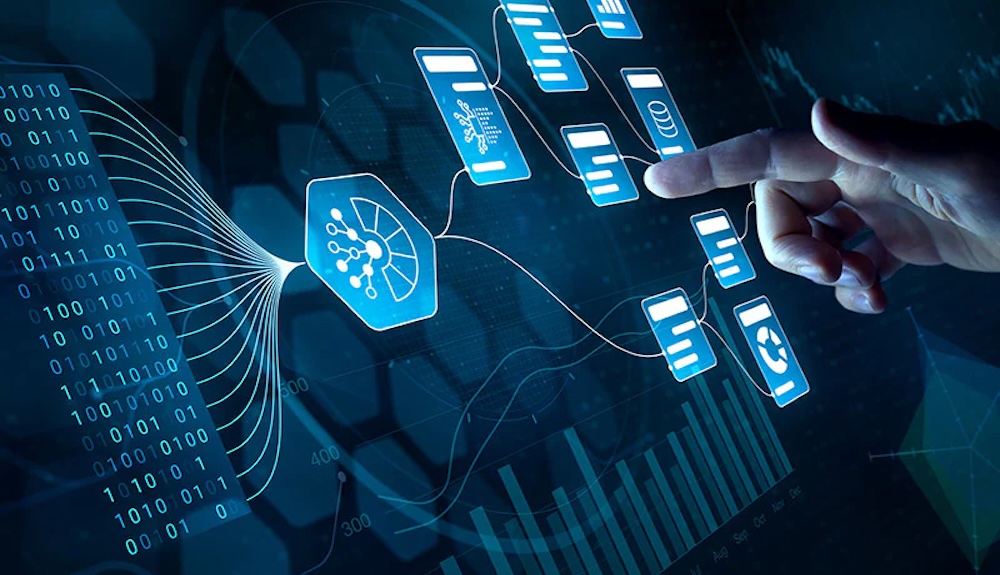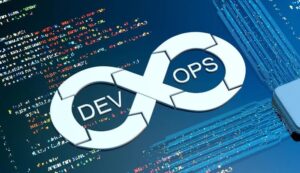With over 25 years of experience in IT strategy, cloud transformation, and technical operations, I have witnessed firsthand the evolution of how organizations maintain system reliability. Today, the integration of artificial intelligence (AI) and machine learning (ML) into Site Reliability Engineering (SRE) represents a fundamental shift in operational excellence. This transformation is essential for organizations striving to deliver resilient, scalable, and seamless digital experiences.
Understanding SRE: Its Importance and Distinction
Site Reliability Engineering (SRE) is a discipline that combines software engineering principles with IT operations to ensure systems are reliable, scalable, and efficient. Originating at Google, SRE treats operational challenges as software problems, emphasizing automation, code-driven infrastructure management, and proactive incident handling. The primary goal is to maintain high availability and minimize downtime while managing increasingly complex systems.
SRE is crucial because it bridges the gap between development and operations teams, fosters automation to reduce manual toil, and sets measurable reliability targets through Service Level Indicators (SLIs), Service Level Objectives (SLOs), and Service Level Agreements (SLAs). Unlike traditional operations, which often rely on manual, reactive incident response and siloed teams, SRE promotes integrated collaboration, automation, and continuous improvement with a strong focus on observability and error budgets.
| Traditional Operations/Monitoring | Site Reliability Engineering (SRE) |
| Manual, reactive incident response | Automated, proactive incident prevention |
| Siloed teams (Dev vs. Ops) | Integrated, collaborative teams |
| Focus on uptime and firefighting | Focus on reliability, automation, and continuous improvement |
| Static monitoring and alerting | Advanced observability, predictive analytics, and error budgets |
| Limited scalability | Designed for massive, cloud-scale environments |
Traditional monitoring tools provide alerts and dashboards, but often lack the depth to predict failures or understand complex system behaviors. SRE’s emphasis on observability enables teams to analyze system internals deeply and respond intelligently.
The 2025 SRE Landscape: AI and Machine Learning at the Forefront
In 2025, AI and ML have become indispensable to SRE, fundamentally reshaping how reliability and operational efficiency are achieved. Below are five key areas where AI and ML are driving transformation, each illustrated with a practical use case from a specific company, the tools and providers they leverage, and the resulting benefit.
1. Predictive Analytics and Proactive Incident Prevention
AI and ML analyze massive volumes of telemetry data (logs, metrics, and traces) in real time to detect early signs of system anomalies. This enables SRE teams to act before issues impact users.
Use Case:
Toyota has implemented an AI platform built on Google Cloud’s AI Infrastructure, empowering factory workers to develop and deploy machine learning models that analyze equipment sensor data for early warning signs of mechanical issues. Toyota also partners with Invisible AI, deploying edge AI devices with NVIDIA processors and high-resolution 3D cameras in 14 North American factories to monitor and optimize assembly lines in real time.
Tools/Providers/Process:
- Google Cloud AI Platform for model development and deployment
- Invisible AI for edge computer vision and real-time analytics
- NVIDIA-powered edge devices for high-performance processing
- IoT sensor integration for continuous data collection
Resulting Benefit:
By proactively addressing these issues before they escalated, Toyota reduced unplanned downtime in its factories and saved over 10,000 man-hours per year, resulting in increased efficiency, cost savings, and improved product quality.
2. Autonomous Incident Resolution and Self-Healing Systems
AI-powered systems now autonomously diagnose incidents and execute remediation actions without human intervention. These self-healing capabilities reduce downtime and free SREs to focus on strategic tasks.
Use Case:
Uber utilizes AI agents to monitor system health and automatically restart services or reroute traffic when anomalies are detected in their customer support and autonomous vehicle systems. Uber’s Scaled Solutions leverages tools like uLabel for data annotation, and integrates AI-driven incident management platforms such as ilert and incident.io to automate the majority of incident response workflows.
Tools/Providers/Process:
- ilert for AI-first incident management, on-call scheduling, and real-time incident analysis
- incident.io for automated investigation, root cause analysis, and Slack integration
- Uber Scaled Solutions for human-in-the-loop AI, data labeling, and process optimization
- uLabel for precise data annotation and model training
Resulting Benefit:
This automation has reduced incident resolution times from hours to minutes, improved customer service reliability, and allowed engineers to focus on higher-value work, ultimately increasing operational efficiency and customer satisfaction.
3. Enhanced Observability and Intelligent Monitoring
AI enhances observability platforms by correlating events across distributed systems, filtering noise, and providing actionable insights rather than raw alerts.
Use Case:
ATB Financial deployed an AI-based observability solution built on Google Cloud BigQuery and generative AI tools like Gemini for Workspace. This platform ingests and correlates structured and unstructured data across their banking systems, providing a unified view of performance and security.
Tools/Providers/Process:
- Google Cloud BigQuery for real-time data ingestion, analytics, and machine learning
- Gemini for Workspace for generative AI-driven insights and automation
- AIOps event correlation platforms (e.g., BigPanda, Moogsoft) for automated pattern detection and root cause analysis
Resulting Benefit:
The team experienced a 40% reduction in alert fatigue and improved incident response times, leading to better system reliability, higher productivity, and increased customer satisfaction.
4. Resource Optimization and Cost Efficiency
AI models forecast demand and dynamically scale resources, optimizing infrastructure usage and controlling costs without sacrificing performance.
Use Case:
Wayfair leverages Google Cloud’s Vertex AI and Densify’s FinOps platform to predict peak shopping periods and automatically scale its e-commerce platform’s compute and bandwidth resources. Vertex AI Pipelines are used for rapid experimentation and Bayesian optimization, while Densify provides real-time cloud resource recommendations.
Tools/Providers/Process:
- Google Vertex AI for demand forecasting, model training, and hyperparameter tuning
- Densify for FinOps-driven cloud resource optimization
- Kubernetes for automated scaling of containerized workloads
- Serverless architecture for dynamic, event-driven scaling
Resulting Benefit:
This approach reduced over-provisioning by 25%, lowering cloud expenses while ensuring smooth user experiences during traffic surges and enabling rapid, data-driven business decisions.
5. AI-Driven Security and Compliance
AI enhances security by detecting anomalous behavior indicative of cyber threats and automating compliance verification to reduce risk.
Use Case:
Scotiabank uses Google Cloud’s Vertex AI and WorkFusion’s Intelligent Automation to monitor user access patterns, flag unusual activities in real time, and automate compliance checks. The bank also runs internal AI hackathons to develop fraud detection models for e-commerce and implements LLM-powered chatbot summarization for customer support.
Tools/Providers/Process:
- Google Cloud Vertex AI for model development and deployment
- WorkFusion for intelligent automation and adverse media monitoring
- LLM-powered chatbots for customer service and compliance Q&A
- Custom AI models for fraud detection and regulatory reporting
Resulting Benefit:
Scotiabank reduced security incident response times by 50%, maintained continuous compliance with regulatory standards, and achieved significant cost savings — $4.2M in six months from automating adverse media monitoring — while mitigating potential fines and reputational damage.
The Human Side: Evolving SRE Roles and Skills
As AI takes on more routine tasks, the role of the SRE is evolving. Engineers are shifting from manual intervention to strategic oversight, focusing on system design, AI model management, and governance. As a result, SREs must develop new competencies in AI, data science, and machine learning to remain effective in this new landscape.
This evolution empowers SREs to collaborate closely with AI agents, interpret insights, and drive continuous improvement. The convergence of SRE and MLOps is also creating new opportunities for cross-functional collaboration, ethical AI oversight, and a culture of reliability and innovation.
A Critical Question for Decision-Makers
Is your organization prepared to integrate AI and machine learning into your SRE practices to stay ahead of the complexity and demands of modern digital operations?
If your current SRE approach relies heavily on manual processes and traditional monitoring, your organization risks falling behind. Embracing AI-driven automation, predictive analytics, and intelligent observability is essential to reduce downtime, optimize costs, and enhance customer satisfaction. Investing in AI-powered SRE tools and upskilling your teams will position your organization to lead in reliability and innovation.
Final Thought
The future of reliability is intelligent automation. Organizations that integrate AI and machine learning into their SRE practices will not only keep systems running smoothly but also unlock new opportunities for innovation and growth. The question is no longer if AI will transform SRE, but how quickly your organization will adapt to this new reality.
Are you ready to let AI redefine your reliability strategy?




